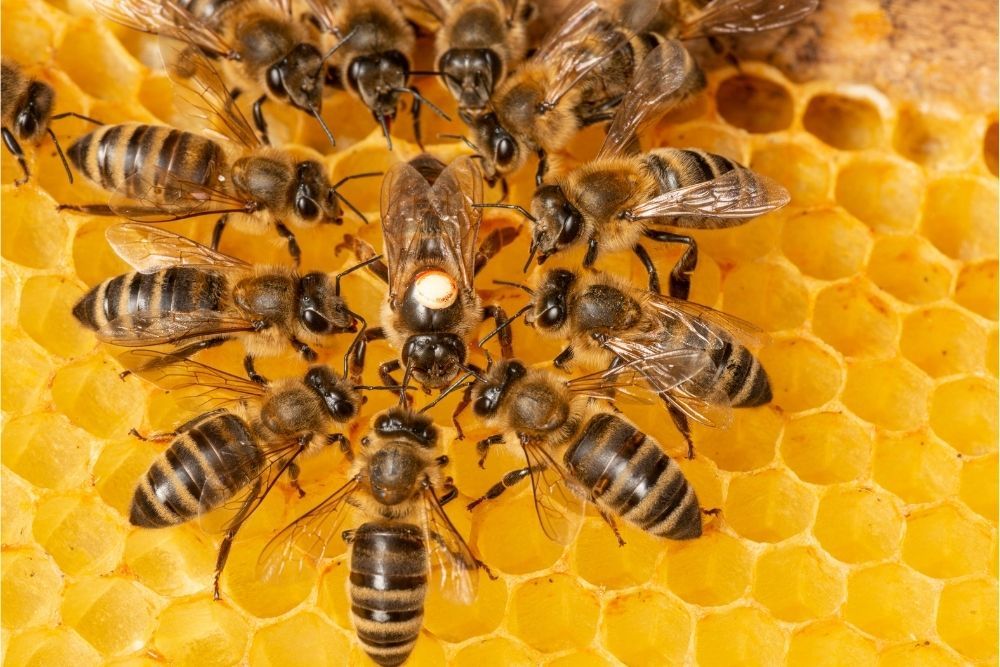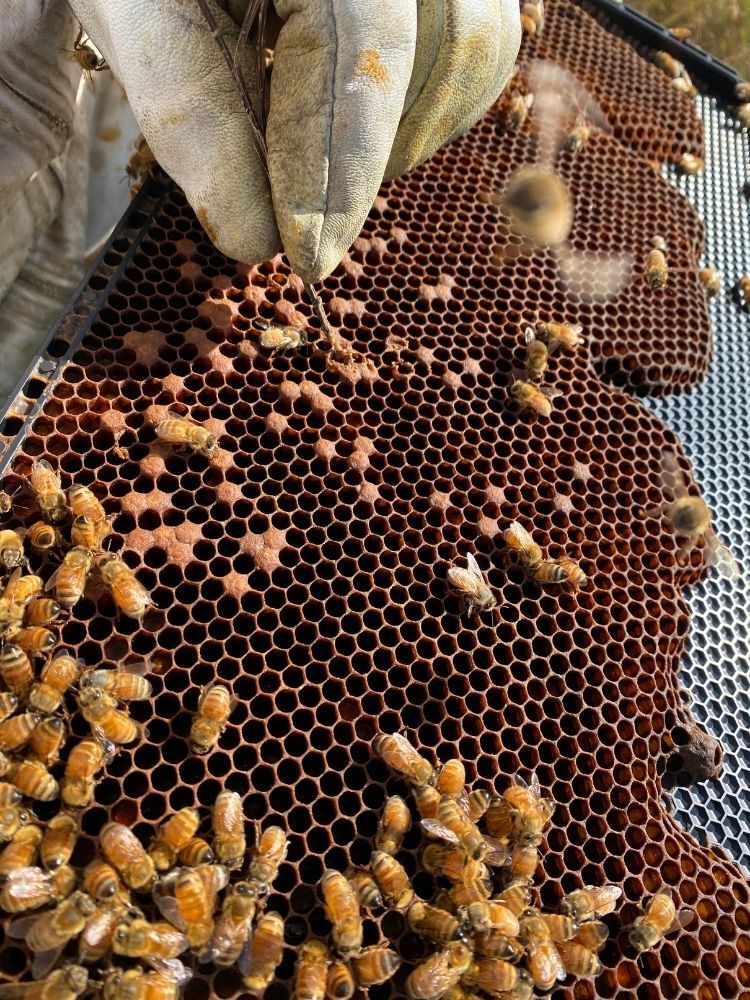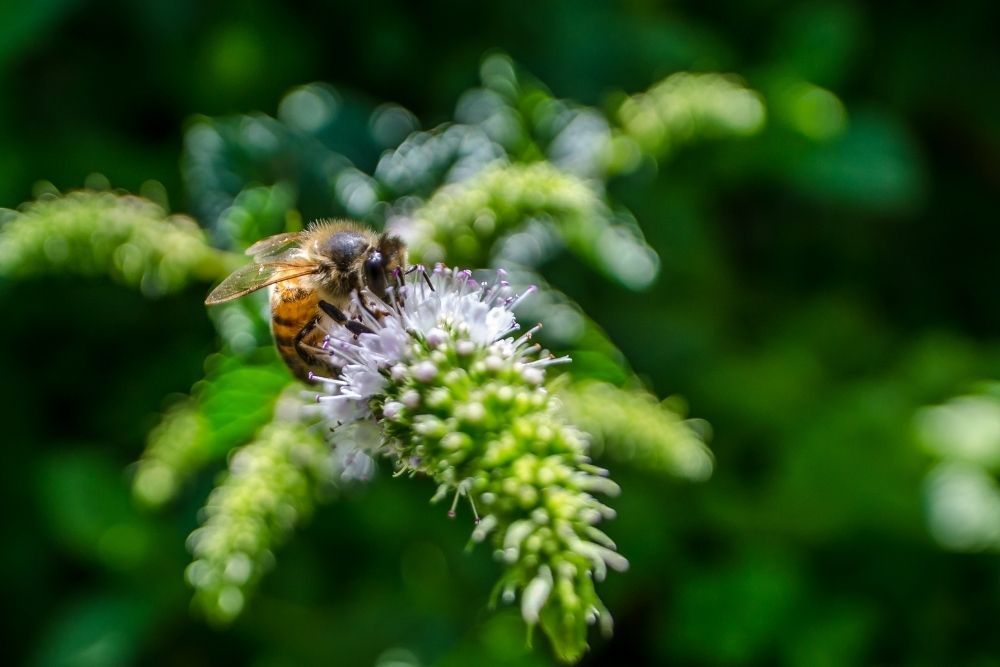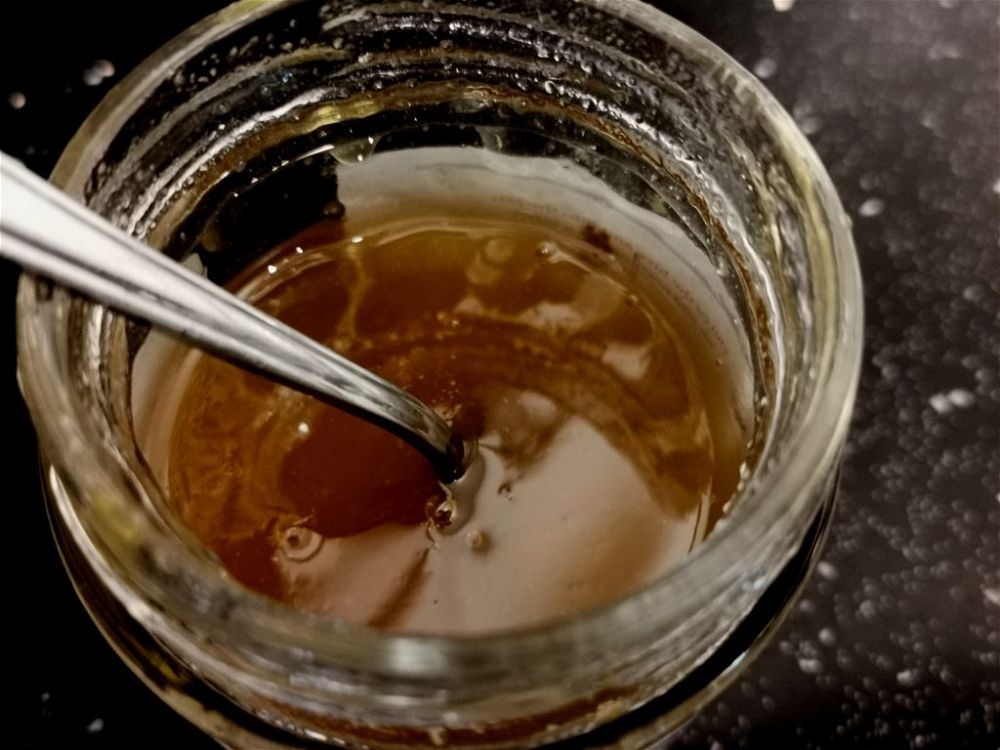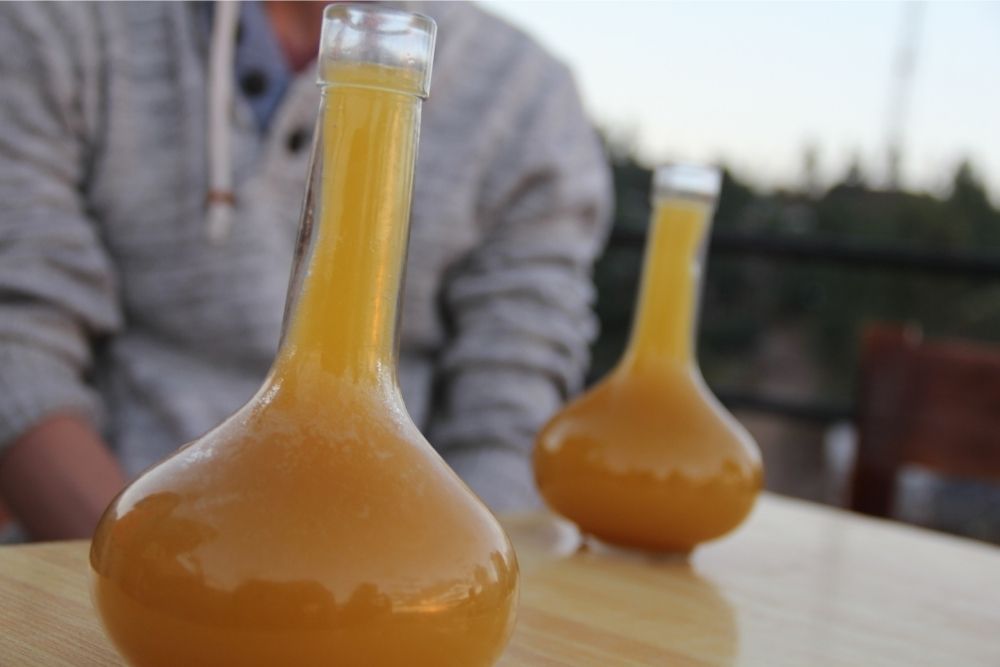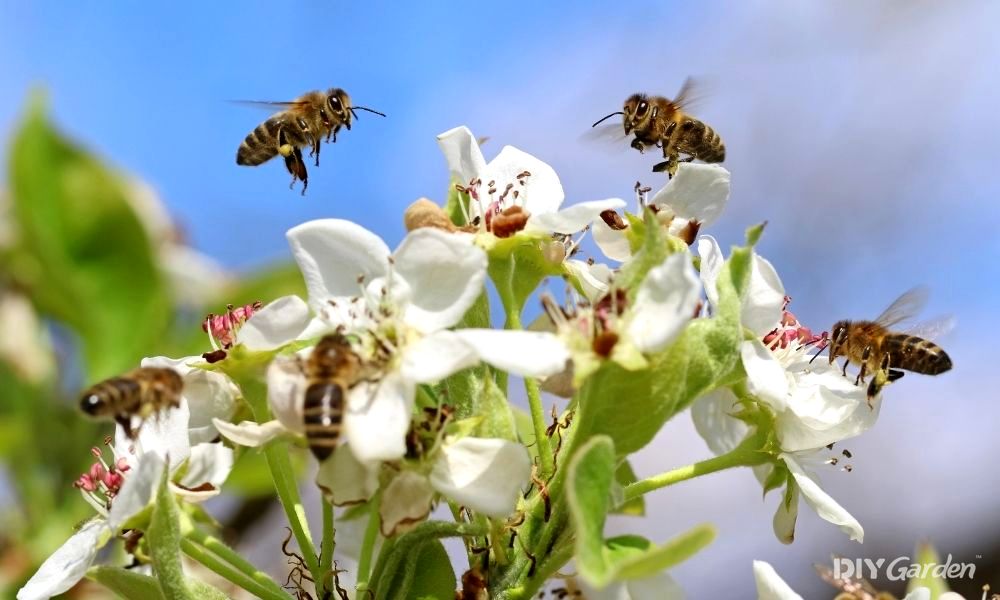
Bees, glorious bees. Many take no notice of our buzzy little friends. But bees are captivating creatures. Don’t believe me? Take a look for yourself. Here are 79 fascinating facts about bees.
1. The Majority of Plants Need Bees
Bees pollinate plants, taking pollen from one flower and transferring it to another. This cross-pollination enables plants to produce seeds for reproduction.
75% of the world’s crops depend on bees for reproduction, along with 90% of wild plants. Without bees, plants would be doomed!
2. Bees Are Steeped in Human History
When venturing into the past, you’ll find our history is filled with bee-related titbits, from the common saying “a bee in your bonnet” to ancient Egyptian hieroglyphics depicting honey harvesting.
In 19th century New England, people even notified bees of significant life events such as deaths, marriages, and births!
3. Beehives Contain 3 Types of Bees
Hives have one queen, then lots of smaller female worker bees. During summer, they also have hundreds of male bees called “drones.” It’s a hard life for a drone bee! They are either thrown out when autumn comes, or they die.
4. Bees Live in Unlikely Places
Bees don’t just live in gardens, forests and meadows. The next time you’re on a soft cliff, beside shingle, marshland, gravel pits, sand dunes, wetland, or chalk grassland, keep your eye out for bees.
You may even find them in old industrial sites!
5. They Fly with Four Wings, Not Two
Despite popular belief, bees have four wings, not two. This is an easy mistake to make – they have two sets of wings, which hook together to give the appearance of two large wings.
6. Bees Travel Using Insect Pathways
Just like us, bees use roads. But bee roads are called B-lines. B-lines are a network of “insect pathways” weaving across UK countryside and towns, connecting areas rich in wildlife.
7. Humans Can Give Bees a Boost
If you spot a bedraggled bumble, give it some sugar water. The consistency should be 50/50. Either offer 2 drops on a teaspoon or use a plastic bottle lid. This will provide the bee with enough carbohydrates to carry on its day.
8. Bees Don’t Always Eat Nectar and Pollen
When nectar and pollen aren’t readily available, bees don’t just die out instantly. They are resourceful. Due to climate change, flowers bloom at different times, so sometimes bees have to seek alternative food.
For solitary bees, plant-feeding insects save the day. When these insects feed, they consume all of the plant’s nutrients but discharge honeydew, a substance rich in nutrients. Scientific research reveals solitary bees visit non-flowering plants, feeding on honeydew left behind.
Bees will also feed on fruit like peaches and oranges if necessary.
9. Bees Communicate Through Dance
Ok, so bees don’t actually dance. But it looks like they do! It’s called the “waggle dance.” Bees use the waggle dance to tell each other where to find the best food.
10. Bees Can Be Trained
Over the years, scientists have spent many, many hours on bees. A bee’s brain is no bigger than a poppy seed. Despite this, bees can be trained to play bee football or pull a piece of string. They can even score a goal when offered sugar in return!
11. There are Sniffer Bees
Bees can also be trained to sniff out explosives, drugs, radioactive metals and pesticides! The name coined for these particular bees is “Sniffer Bees.”
12. Their Feet Stink!
Bees have smelly feet. They use the stinky footprints to identify whether the scent has come from themselves, a relative, or a stranger. Their smelly feet are also helpful when finding food sources, as they steer clear of flowers that have already been frequented.
13. They Can Choose Their Queen
If the Queen Bee dies, worker bees don’t just stop working. They choose themselves a new queen! They will pick out a young larva and feed it with royal jelly. This larva then grows into a fertile queen!
14. Bees have Unique Navigation Skills
Bees rely on the position of the sun to identify their location. They understand where they are and which way to travel to reach the hive.
You might be thinking: what about on cloudy days? Well, bees are highly sensitive to polarised light, meaning they can see the sun even when it’s behind the clouds.
15. They Don’t Sleep
Bees don’t sleep like you or me, but they have a period of dormancy. They stay completely still, enabling them to keep their energy ready for the next day.
16. Bees Fly up to 20mph
If you’ve ever seen a bee zoom past you, you may have wondered how fast they can travel. When worker bees search for food, their pace is 15-20mph. This lowers to 12mph when they’re on their way back.
17. Colonies Fly the Distance from Earth to the Moon Daily
Worker bees can fly up to 3 miles for food, not generally venturing much further than 1 mile from the hive. In total, a big colony flies the distance between the Earth and the Moon every single day.
18. Bees Make Bread
It’s not bread as we know it; it’s more of a bee-bread. Honey bees combine pollen and water and feed this to their larvae. This bread is packed full of protein, carbohydrates, and fat, helping the larvae grow big and strong.
19. Bees Only Sting For Two Reasons
Bees sting to protect their colony and if they’re frightened. Bee stings hurt because they’re actually injecting venom into your skin. The sting has barbs that dig into your skin, allowing the venom to seep in.
The venom sack and glands are pulled out when the bee stings, causing the bee to die. And you thought you had it bad!
20. Only Certain Bees Can Sting
But not all bees can sting. Stingers are another luxury drone bees don’t have. If you get stung, it’ll likely be by a female worker bee. Queen bees can sting too, but they’re usually tucked away in the hive.
21. Honey Bee Venom Can Kill Cancer Cells
A 2020 study examining the link between honeybee venom and breast cancer found that components found in honeybee venom can actually kill specific cancer cells.
22. They Don’t See Red
Bees can see blue in striking clarity, and they can see lots of ultraviolet light, but they can’t see red. Regardless, they still frequent red flowers because of their distinctive ultraviolet pattern.
23. Bees Form Football-Sized Clusters in Winter
Bees don’t hibernate during winter. Instead, they form football-sized clusters to keep themselves warm. Much like penguin huddles, bees rotate, each taking a turn at being on the cold, outer edge.
24. They Taste With More Than Just Their Tongue
Bees taste with their tongues, just like us. But the taste organs don’t end there. Bees can also use their antennae, front feet, and jaw to taste! They have over 300 taste receptors just in their antennae.
25. Bees Have 5 Eyes!
Bees have not one, not two, but five eyes! They have two large compound eyes at the front, then three smaller eyes positioned at the centre of the head.
26. Honey Has Antibacterial and Antioxidant Properties
Honey contains an antibacterial component called propolis. This helps us fight off illnesses. The antioxidants within honey remove free radicals from our bodies, which reduces the risk of many cancers.
27. Bees Fly 55,000 Miles to Make 1lb of Honey
Bees lead busy lives. A single hive typically produces around 60lb of honey a season. Bees fly approximately 55,000 miles for a singular pound of honey. For one hive making 60lb, that’s 3.3 million miles a season!
28. Honey Differs Depending on Flowers
Honey looks and tastes different depending on the foliage and flowers the bees have visited. Clear honey will often be from garden flowers, whereas hard honey typically comes from oilseed rape.
Heather honey is the crème de la crème of all honey, with its characteristic clear appearance.
29. Honey Comes From Bees’ Mouths
Bees combine nectar with enzymes from their mouth glands. They keep this in their honeycomb until the consistency thickens. Then, this is removed by the beekeeper.
30. 40,000 Bees Make Up a Colony
When it’s summertime, the hive comprises worker bees, drone bees, and the queen bee. A colony can consist of 40,000 bees during this time. But this reduces by 87.5% in winter, leaving just 5,000 bees.
31. There’s More to Bees than Honey
Honey is what bees are most famous for. As well as honey, bees produce:
- Beeswax
- Propolis
- Royal jelly
- Bee bread
Beeswax is used to make candles and furniture polish, and bee bread to stop the inevitable autumn sneezes. Propolis and royal jelly are valued for their medicinal capabilities.
32. Our Economy Needs Bees
Unsurprisingly, all of these bee products are sold in abundance. Bees boost our economy in many ways, the most significant being crop production. Bees add around £600 million a year to the UK economy in crop production alone!
It would cost UK farmers £1.8 billion a year to pollinate their crops themselves.
33. We Can Assess The Health of the Environment By Looking at Bees
Scientists take samples of honey and analyse them. Through this, they can check environmental pollutants such as pesticides. This gives us a good indication of the extent of pollution.
The number of bees is carefully examined. When bee numbers decline, so do the numbers of other pollinators. We track this to observe the health of our environment.
34. Bees Need Green Spaces, and So Do We!
Bees pollinate the plants seen in your garden, local park, and nearby woodland. Green spaces are almost as essential for us as they are for bees. Spending time in green spaces improves our mental and physical health.
But for bees, green spaces are essential for survival.
35. There Are Over 270 Bee Species in the UK Alone
Over 270 bee species have been discovered in the UK. And there may be more still undiscovered! Across the world, there are a staggering 20,000 different species of bee.
36. Some Bees Don’t Form Colonies
Solitary bees live independently, creating individual nests in hollowed-out stems, cavities in wood, holes in the ground and sandy dunes. There are over 200 species of solitary bees.
37. Some Bees Don’t Produce Honey
Solitary bees don’t produce honey, either! They don’t live in a hive and aren’t governed by a queen bee, so they live their peaceful lives alone.
38. Personalities Differ Between Bee Species
Bees’ personalities differ based on their function. Solitary bees don’t need to produce honey because they don’t need it to survive. Instead, they feed on flower pollen and nectar.
Additionally, evidence suggests that some bees thrill-seek, showing a stronger desire for adventure than their fuzzy relatives.
39. American and European Foulbrood are Killing Bees
Diseases are killing bees in shocking numbers. American Foulbrood and European Foulbrood are bacterial diseases that target the larvae. They quickly spread across a hive, killing many bee larvae along the way.
To get rid of the disease, the hive has to be destroyed.
40. Humans Are Killing Bees
UK farming uses neonicotinoids, pesticides that have proven fatal to bees. Neonicotinoids adversely affect bees’ immune systems, weakening them and putting them at risk of parasites and infections.
And that’s just one pesticide. Bees are also suffering due to habitat destruction, air pollution and global warming.
41. Bees Are Facing Extinction
Pollution, diseases, habitat destruction, pesticides, and climate change all play a part in bee decline. The invasion of non-native animal and plant species makes it progressively harder for bees to survive.
One or two of these factors may disrupt bees. The combination of them all sets bees on the path to extinction.
42. You Can Help Bees Survive
You can do your part and give back to the local bees by planting nectar- and pollen-rich flowers and buying local honey. Even if you live in a big city, a balcony bursting with flowers will make a big difference to bees.
43. Shopping Local Helps Bees
Buying honey and other bee products at local, independent shops ensures money goes back into the local beekeepers’ pockets. You can watch in awe as the honey changes from season to season and know that you’re helping out the local bee colonies.
44. Bees Go Nuts for Herbs
Herbs, especially flowering herbs, provide everything bees want. They produce pollen in abundance and often bloom for long stretches. Their winter-flowering ensures bees have access to nectar all year round.
45. Bees Detect the Queen Bee’s Absence within 15 Minutes
If the queen bee is absent for whatever reason, the colony can tell within just 15 minutes. They notice due to the absence of her pheromones. If this occurs, worker bees become aggressive and agitated. Without a queen, eggs remain unfertilised, producing only worker bees.
46. Male Honey Bees Are Fatherless
Drone bees grow from unfertilised eggs. When the egg is fertilised, the larva becomes a female worker bee. Drone bees only have one set of chromosomes, so they’re considered fatherless!
They do have a grandfather, though. The larva’s mother would have developed from a fertilised egg, so she would have a father.
47. The Queen Bee is Much Larger than Worker Bees
The queen bee measures approximately 2cm, whereas the worker bees measure just 1cm. Drone bees are larger than worker bees but still smaller than the queen.
48. Queen Bees Can Live for 4 Years
While worker bees typically live no longer than 55 days, honey bee queens keep going for 4 years. This is due to a milky liquid commonly known as royal jelly. Royal jelly increases longevity and accounts for the queen bee’s bigger size.
49. Honey Bee Queen’s Lay Up to 3000 Eggs a Day!
When the honey bee queen attempts to create an established colony, she can lay up to 3000 eggs a day. These eggs would collectively weigh more than she does!
50. Honey Bees Talk Using Pheromones
Trophallaxis refers to the transfer of food from one organism to another. But for bees, trophallaxis is also a form of communication.
As food is passed from bee to bee, they also taste pheromones from the queen bee. This is how they know she is alive. Information is also spread about new food sources.
51. Drone Bees Mate, Then Die
The life of a drone bee isn’t easy. Once they mate, their endophallus is removed. This rips out their abdomen, leading to a quick death.
The only reason drone bees live is to mate, so if a lucky drone survives mating, he’s kicked out of the nest!
52. Bees Beat Their Wings 12,000 Times a Minute!
When in flight, bees beat their wings 200 times a second. That’s 12,000 times a minute! Considering this, their extensive sugar intake comes as little surprise.
53. One Teaspoon of Honey = 12 Bees’ Lifetimes
A single worker bee’s lifetime will consist of making 1/12 a teaspoon of honey. So when you mix a spoonful of honey into your tea, that’s the lifetime work of 12 bees.
54. Honey is One in a Million
Honey is the only insect-produced food that humans eat. No other insect produces anything half as tasty, so we just don’t eat it!
55. Without Wasps, There’d Be No Bees
Bees evolved from hunting wasps. These hunting wasps became so fond of the taste of nectar that they became vegetarians. And now, here we are!
56. Scientists Love Bees
Honey bees feature in scientific studies on communication, colony defence, social behaviour, and behavioural genetics.
Bees have been prominent in archaeological history, as studies of beeswax have enabled us to identify the various elements of organic residue.
In fact, scientists have named bees the most important living beings on the planet!
57. Bees Are Better at Smelling in the Morning
A scientific study involving honey bees found that bees are better at smelling new odours in the mornings. Never mind the early bird catches the worm – the early bee gets the best flower!
58. Hexagons are the Perfect Shape for Storage
The hexagonal shape was first introduced to human civilisation through bees. The shape of their honeycomb is super-efficient as they slot together perfectly.
59. Bees’ Eyes are Hairy!
Bees are covered in hair, enabling them to carry as much pollen as possible. Even their eyes are hairy! According to scientific research, the eye hair allows bees to suspend the pollen overhead before removing it with their front legs.
60. Bees Poo, Too!
Surprisingly, whether bees poo is a common question. The answer is: yes! Bees do poo. But not very often. When they do, they clean up after themselves.
61. Honey Bees Recognise Conceptual Relationships
Honey bees put the age-old belief that big brains are better to shame. Even with their poppy seed-sized brains, honey bees can understand conceptual relationships, like above/below and same/different.
62. Bees Can Vote
Honey bees have many important decisions to make, such as where the location of their new nest should be.
They search for suitable sites, then communicate with the rest of the hive using a sequence of movements (their “waggle dance”). If the hive agrees, they imitate the actions – they vote for the new location!
63. Scientists Are Using Bee Brains to Create Flying Robots
The European honey bee’s brain has been studied extensively and reconstructed. This is in the hopes of creating an autonomous flying pollinating robot.
64. They Can Detect Human Illness
Bees’ incredible sense of smell allows them to detect things that we humans cannot. Scientists aim to utilise this unique ability by training bees to detect biomarkers of diseases such as cancer.
65. Bees Predate Humans
Bees have stood the test of time. They have been around for much longer than us. Fossils have shown that bees were buzzing approximately 130 million years ago! Around this time, our ancestors looked like rats!
66. Bees Were Used in Warfare
Bees have been used for entomological warfare. It’s believed that beehives were thrown into caves to coerce enemies into the open, making them an easy target.
67. Beehives Differ Across Countries
We’re used to seeing beehives in birdhouse-like wooden boxes. But they differ across countries. In Egypt, they’re used to seeing clay or mud hives, and northern and western Europe often keep bees in Skeps, straw baskets turned upside down.
68. Honey was Used as Medicine
Honey has anti-inflammatory, antioxidant and antibacterial properties. Due to this, it has been used to treat all manner of illnesses, including throat infections, eczema, piles, constipation, fatigue, hepatitis, and much, much more.
69. Humans Originally Believed the Head Bee Was Male
Humans believed, right up until 1586, that the head bee was male. The fact that the head bee is actually female didn’t become common knowledge until Charles Butler published it in “Father of English Beekeeping.”
70. Honey is Used to Make Mead
Mead is an alcoholic drink that was popular during ancient times. It is created by fermenting honey and combining it with water. If you’ve seen a film or TV series about Vikings, mead may well have featured.
71. Honey Features in Popular Fiction
Honey is so ingrained in UK history that it is referenced in many books, including the Sherlock Holmes series and Winnie the Pooh.
Bee-related names also appear in Oliver Twist (Mr Bumble) and Harry Potter, with the famous Dumbledore himself meaning bumblebee in Cornish.
72. Honey is Important in Religion
It’s not just in fiction that honey makes its mark. It also appears in the Christian, Sikh, and Hindu holy books.
73. Bees Visit 2 Million Flowers to Make 1lb of Honey
A single bee must visit 2 million flowers to make just 1lb of honey. So next time you’ve got a spoonful, savour it!
74. Bees Live Everywhere But Antarctica
You can travel to the ends of the Earth and still find bees blissfully buzzing about. But if you go to Antarctica in search of bees, you’ll be disappointed. Bees steer clear of Antarctica due to the lack of insect-pollinated flowers.
75. Honey Has Been Used for Tax
Honey was so famous at points that it was actually used to pay for tax. This occurred during the Roman Empire.
76. Bees Fan Their Hive
When we get too hot, we fan ourselves or switch the closest electric fan on. Well, bees aren’t all that different. There are designated temperature-moderating bees that fan their wings to keep the hive cool.
77. Bees Are Great Rubbish Removers
As we know from earlier, bees don’t poo that often. But when they do, they get rid of it regularly. They work hard at keeping their comb clean and tidy.
78. Bees Have Super Long Tongues!
Bees need good, strong tongues to suck all the nectar out of those delicious flowers. Some bees have such a long tongue that they fold it under their bodies when they’re not using it!
79. The Collective Noun for Young Bees is a Brood
The group of baby bees (also called larvae) the female bees work so hard to tend to are called a brood. This suits the amount of care and attention given to keep them alive.
Summary
You can’t beat bees. After reading those 79 facts, you can’t say they’re not exciting creatures. With a super-powerful sense of smell and 5 eyes to see, they’re anatomically awesome.
They keep us alive through pollination and put money in our economy’s pocket! Small changes are all it takes to save our beautiful bees.
Bee the change you want to see.

